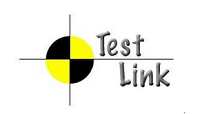Description

Kualitee

Zephyr
Comprehensive Overview: Kualitee vs Zephyr
Kualitee and Zephyr are both prominent tools in the realm of software testing, offering functionalities tailored to streamline and enhance the testing process. Here's a comprehensive overview of each:
Kualitee
a) Primary Functions and Target Markets
- Primary Functions: Kualitee is a test management tool designed to assist in the planning, execution, and tracking of software testing activities. Its key features include test case management, defect management, test planning, and customizable reporting. It also offers integrations with popular testing and project management tools like JIRA, Jenkins, and Git.
- Target Markets: Kualitee primarily targets enterprises and mid-sized businesses across various industries that require robust test management capabilities. It caters to QA teams, project managers, and software development teams looking for a comprehensive solution to manage their testing workflows.
b) Market Share and User Base
- Kualitee operates in a competitive segment of the software testing market but, compared to larger players like Zephyr, has a smaller market share. Its user base is steadily growing, primarily among organizations seeking cost-effective and user-friendly test management solutions.
c) Key Differentiating Factors
- Usability: Kualitee is often praised for its intuitive and user-friendly interface, which can be appealing for teams that prefer a straightforward approach to test management.
- Cost: It tends to be more cost-effective, making it attractive for smaller teams or companies with budget constraints.
- Customization: Offers a good level of customization for reports and dashboards, allowing teams to adapt the tool to their specific needs.
Zephyr
a) Primary Functions and Target Markets
- Primary Functions: Zephyr is a comprehensive suite of test management solutions, which include tools like Zephyr Squad, Zephyr Scale, and Zephyr Enterprise. These tools provide functionalities such as test execution, planning, test automation integration, and advanced analytics. Zephyr’s integration with Atlassian’s Jira makes it a popular choice for agile teams.
- Target Markets: Zephyr targets a wide range of industries, including IT, finance, healthcare, and telecommunications. It serves small to large enterprises, with a significant presence in organizations that utilize agile methodologies and require integration with Jira.
b) Market Share and User Base
- Zephyr enjoys a more significant market presence, particularly among Jira users, due to its strong integration capabilities. It has a substantial user base globally and is widely adopted by large enterprises that need extensive testing capabilities aligned with agile practices.
c) Key Differentiating Factors
- Integration with Jira: One of Zephyr’s most substantial advantages is its deep and seamless integration with Jira, making it a go-to choice for organizations already using Jira for project management.
- Scalability: Zephyr offers robust solutions that can scale from small teams up to large, complex enterprise environments, particularly with Zephyr Enterprise.
- Feature Richness: Zephyr provides comprehensive features catering to detailed test management needs and supports various testing methodologies, including agile and DevOps practices.
Comparative Analysis
When comparing Kualitee and Zephyr, the choice often boils down to the specific needs of the organization and existing tools in use. Kualitee is a strong candidate for smaller teams or organizations looking for a budget-friendly, straightforward solution. In contrast, Zephyr is more suitable for larger teams or organizations already embedded in the Atlassian ecosystem, especially those requiring advanced capabilities and scalability in their testing processes.
Contact Info

Year founded :
2018
+1 415-644-5060
Not Available
United States
http://www.linkedin.com/company/kualitee

Year founded :
2006
Not Available
Not Available
Norway
Not Available
Feature Similarity Breakdown: Kualitee, Zephyr
When comparing Kualitee and Zephyr, both of which are test management tools, it's essential to consider their core features, user interfaces, and any unique characteristics that set them apart. Here’s a breakdown:
a) Core Features in Common:
-
Test Management:
- Both tools allow the creation, management, and execution of test cases.
- They provide capabilities for organizing test plans and test cycles.
-
Integration:
- Integration with popular bug tracking tools like JIRA is supported by both.
- They allow integration with CI/CD tools for automated testing.
-
Reporting and Analytics:
- Offer various reports and dashboards to track testing progress and outcomes.
- Allow customization of reports to suit specific project needs.
-
Collaboration:
- Support collaboration among team members with role-based access control.
- Facilitate communication and visibility across different teams and stakeholders.
-
Defect Tracking:
- Both tools provide defect tracking capabilities which can either be standalone or integrated with other systems.
b) User Interfaces Comparison:
-
Kualitee:
- The user interface is generally regarded as clean, user-friendly, and straightforward.
- Navigation is intuitive, and the dashboard provides quick insights into testing progress and system status.
- It emphasizes ease of use for users who may not be deeply technical.
-
Zephyr:
- Zephyr's UI is also user-friendly but can be more complex due to the breadth of features, especially in more advanced products like Zephyr Enterprise.
- It offers a variety of views and dashboards, catering to users ranging from test engineers to managers.
- Generally polished with options for customizing views to fit user needs.
c) Unique Features:
-
Kualitee:
- Offers a unique "Requirement Traceability" feature that allows for easier tracking of test cases against requirements.
- Provides a strong focus on security with IP whitelisting and detailed audit logging.
- It includes a built-in issue tracker, which some users find helpful for simple projects without the need for external bug trackers.
-
Zephyr:
- Zephyr Enterprise provides advanced testing features suitable for scaled Agile, DevOps, and continuous testing environments.
- Offers extensive integrations with a wider variety of tools and CI/CD pipelines, catering to enterprise-level needs.
- Provides a more mature support system with comprehensive documentation and resources for large teams.
In summary, while Kualitee and Zephyr share many core features catering to test management needs, they are differentiated by unique user interface styles, specific advanced features, and the extent to which they cater to enterprise environments. Kualitee leans towards simplicity and ease of use, while Zephyr offers advanced capabilities for larger, more complex testing environments.
Features

Not Available

Not Available
Best Fit Use Cases: Kualitee, Zephyr
Kualitee and Zephyr are both robust tools used for test management in software development, each with strengths that make them suitable for different use cases, industry verticals, and company sizes. Here’s a detailed look at how they cater to different business needs:
Kualitee
a) Best Fit for Kualitee
-
Small to Medium Enterprises (SMEs):
- Kualitee is especially beneficial for SMEs due to its user-friendly interface and straightforward pricing structure. It provides essential features without overwhelming users with complex functionalities.
-
Agile Development Teams:
- With its strong emphasis on collaboration and real-time feedback, Kualitee is well-suited for Agile teams that require flexibility and efficient communication among stakeholders.
-
Multi-Project Management:
- This tool excels in scenarios where businesses need to manage multiple testing projects. Its dashboard offers a centralized view that helps in tracking progress across various projects.
-
Budget-Conscious Organizations:
- Kualitee offers a cost-effective solution for teams that need a comprehensive test management tool without the significant investment that might be required for enterprise-grade solutions.
d) Catering to Different Industry Verticals or Company Sizes:
- SMEs across Various Industries: Its adaptable platform works well for companies in tech, retail, healthcare, and finance that need to manage testing processes without extensive customization.
- Start-ups and Smaller Development Shops: Often gravitating towards tools that are easy to implement and don't require heavy IT support.
Zephyr
b) Preferred Scenarios for Zephyr
-
Enterprise-Level Organizations:
- Zephyr is ideal for larger organizations that require enterprise-grade solutions. It supports complex testing needs and integrates well with other enterprise applications like Jira.
-
Integration with Jira:
- For companies heavily invested in Jira for project management, Zephyr provides seamless integration that enhances test management capabilities within the Jira environment.
-
Scaling Agile/DevOps Processes:
- Zephyr supports scaling up Agile and DevOps processes due to its robust features for automation and continuous testing, making it suitable for advanced teams focusing on continuous delivery.
-
Regulatory and Compliance Focused Industries:
- Industries such as healthcare, finance, and legal sectors, which require stringent compliance and comprehensive audit trails, benefit from Zephyr’s detailed reporting and documentation capabilities.
d) Catering to Different Industry Verticals or Company Sizes:
- Large Enterprises: Zephyr's features are particularly suited to larger firms in technology, finance, and telecommunications, where complex testing environments and large team collaboration are common.
- Regulated Industries: Its strong compliance and reporting features make it a good fit for industries needing detailed documentation and adherence to strict standards.
- Global Organizations: Zephyr caters well to global teams due to its scalability and ability to handle complex, large-scale test management scenarios.
In summary, Kualitee is often the best choice for SMEs and start-ups in need of an affordable, user-friendly tool, while Zephyr is more aligned with large enterprises and heavily regulated industries that require robust, enterprise-level test management integrated with Jira.
Pricing

Pricing Not Available

Pricing Not Available
Metrics History
Metrics History
Comparing teamSize across companies
Conclusion & Final Verdict: Kualitee vs Zephyr
When evaluating Kualitee and Zephyr, both are competent test management tools used by software development teams to streamline their testing processes. However, choosing between them depends on various factors including features, pricing, integration capabilities, and user preferences.
a) Best Overall Value
Zephyr offers the best overall value for larger organizations and teams deeply integrated with the Atlassian ecosystem. Its advanced capabilities, extensive integration with JIRA, and support for complex workflows make it an excellent choice for large-scale or highly structured testing environments.
b) Pros and Cons
Kualitee:
-
Pros:
- User-friendly interface with an intuitive design which is great for teams looking for straightforward navigation.
- Comprehensive test management features, including test planning, bug tracking, and reporting.
- Strong collaboration tools, making it easy for teams to communicate effectively.
- Flexible pricing, which can be more affordable for small to medium-sized teams.
-
Cons:
- May lack the depth of integration options available with larger ecosystems like JIRA.
- Limited advanced features, which might not meet the needs of complex testing requirements.
- Some users report slower performance when dealing with large datasets.
Zephyr:
-
Pros:
- Seamless integration with JIRA, highly beneficial for teams already using Atlassian tools.
- Scalable features that cater well to large teams and complex testing processes.
- Advanced analytics and reporting capabilities which are advantageous for detailed project insights.
- Widely recognized in the industry with robust customer support and community resources.
-
Cons:
- Higher pricing tiers, which may not be ideal for smaller teams or those with budget constraints.
- Steeper learning curve, potentially requiring more time for team onboarding.
- Complex configurations can lead to over-customization without careful management.
c) Recommendations
-
For Users Seeking Integration with Atlassian Tools:
Zephyr is the clear choice due to its robust integration with JIRA and other Atlassian products. Its ability to handle complex testing scenarios makes it ideal for larger teams. -
For Small to Medium Teams or Budget-Conscious Users:
Kualitee may offer the better value due to its simplicity, ease of use, and cost-effective pricing. It's well-suited for teams looking for essential test management features without the overhead of complex functionalities. -
For Users Requiring Detailed Reporting and Analytics:
While both tools offer reporting features, Zephyr's advanced analytics are superior for users needing in-depth insights and metrics on their testing processes.
In conclusion, the choice between Kualitee and Zephyr should align with the specific needs of your team and existing infrastructure. Assessing the size of your team, integration requirements, and budget considerations will help determine the best fit for your organization.
Add to compare
Add similar companies




